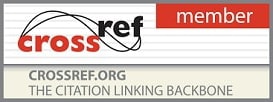P-ISSN: 2349-6800, E-ISSN: 2320-7078
Journal of Entomology and Zoology Studies
2022, Vol. 10, Issue 3
Morphological and biochemical screening of upland cotton (Gossypium hirsutum L.) hybrids for jassid (Amrasca devastans Dist.) resistance
K Keerthivarman, S Subashnini and K Aravind
The current experiment was carried out in the field in a Randomized Block Design (RBD) for parents viz., MCU5, MCU7, CO14, and CO17, which were utilized as lines (high yield) and KC2, KC3, NDLH1755 and NDLH1938, which were used as testers throughout the summer season of 2021. From the mean values among all parents calculated, KC 2 had lowest jassid population of mean 4.13 numbers per leaf, highest amount of phenol (3.72 mg/g), low amount of reducing sugars (1.22 mg/g) and high chlorophyll index (58.73). Among other hybrids the hybrid MCU 5 × KC 3 outperformed for highest phenol content (3.72 mg/g), highest chlorophyll index (58.73) with lowest Jassid count (4.13 numbers/ plant). Hence from the correlation results, number of jassids per plant would be lower for high phenolic content, low reducing sugar, lower soluble proteins, higher chlorophyll index and higher trichome density. Hence breeding could be made for resistance to jassids by insight into this biochemical analysis and trichome density of the cultivar which would help reduce use of insecticides and pest load from the fields thereby enhancing the yield of the population.
Pages : 122-126 | 613 Views | 265 Downloads
How to cite this article:
K Keerthivarman, S Subashnini, K Aravind. Morphological and biochemical screening of upland cotton (Gossypium hirsutum L.) hybrids for jassid (Amrasca devastans Dist.) resistance. J Entomol Zool Stud 2022;10(3):122-126. DOI: 10.22271/j.ento.2022.v10.i3b.9000
Related Journal Subscription
Important Publications Links
Important Links










